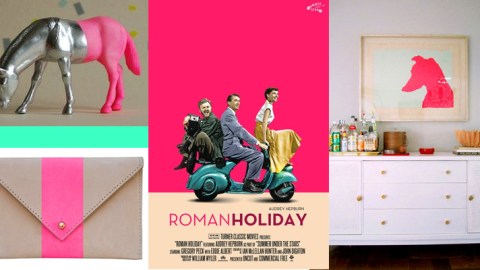Has Pinterest Pinned Down the Future of the Web?

After being created as a text-only destination nearly twenty years ago, the Web has increasingly become a visual destination, where images, photos and videos have replaced text as the new lingua franca of online influencers. In the evolutionary development from blogs to Facebook to Tumblr and now to Pinterest, there has been a steady shift toward more images and less text, as well as easier, one-click ways to share this visual content with everyone else on the Internet. In 2012, this shift will become even more profound, as sites like Pinterest lead to a re-thinking of not just the way we curate information on the Web, but also the ways that we purchase objects and discover new connections on the Web.
As Farhad Manjoo recently remarked on Fast Company, there can be no doubt by now that photos are the new killer app of the Web. If you want to get big fast on the Internet, re-focus your site around photos and images. That’s certainly been the lesson of Instagram, which has become the largest mobile social network in the world thanks to its beguiling set of photo filters and easy sharing functionality. That was also the lesson of Fab.com, which rocketed to success in 2011 after shifting to a visual e-commerce layout.
There is perhaps no better way to understand this shift to a visual web than in the growth of Pinterest (and all the other pinboard clones). Now the darling of the fast adopter tech crowd, Pinterest has experienced explosive growth since its beta launch in March 2010. By some accounts, there are now more than 3 million active monthly members, all of whom are “pinning” their favorites across the Web and “re-pinning” the faves of their friends as well. Instead of curating this content in “streams” (as you would on Facebook or Twitter), people are now curating this content in “collections” that are meant to be browsed in their entirety rather than than a la carte.
Once the exclusive preserve of decorators, designers and DIY artisans, Pinterest is increasingly gaining traction with the types of people that you don’t normally think of sitting around all day clipping out pictures and putting together mood boards. A company like Whole Foods has already attracted thousands of Pinterest followers with an addictive mix of images around themes like “delicious art” and “creative Christmas projects.” And it’s not just consumer-facing retailers with stuff to sell who are getting into the game – both The Washington Post and The Today Show also have created Pinterest boards.
And that’s where things get interesting. We’re not just talking about “pinning” pretty images or cool-looking products anymore, we’re talking about “pinning” ideas. We’re talking about media companies as lifestyle companies, about content creators as curators with a unique visual aesthetic.
As we increasingly consume content across mobile devices, sites like Pinterest are staying one step ahead in adapting to the new visual Web by developing new mobile apps. All it takes now to pin objects in real-time is the click of a single button on an iPhone app. It’s easiest to see how all this easy pinning could have its greatest impact on how people shop for goods – imagine window shopping with Pinterest. Or think of how many times you’ve sat across from someone on the subway or commuter train and their reading material of choice has been… a catalog. That’s right, while you’re buried nose-deep in the latest from Murakami, the guy or gal across from you is busily slurping down the latest design trends from West Elm. The online equivalent of that catalog would be Pinterest.
Wait, did I just mention West Elm? What a coincidence, since West Elm is one of the early adopters with a Pinterest site and over 5,000 followers. West Elm uses its Pinterest site to connect with artisans on Etsy, showcase new design ideas for every room of the house (natch) and display photos of fans in West Elm retail stores. See a picture of an item you like, just pin it. Whenever someone else sees your pin, all they need to do is click on that link and presto! Pinterest has just been turned into a highly-effective e-commerce discovery engine. Why search for an item when you can visually discover it?
In 2012, the key to cracking the Interent will be pinning down the visual web. Instead of “liking” or “retweeting” content you like, you will now be “pinning” it. Instead of soundbites in 140 characters or less, you will now be sifting through images on pinboards. The same people who had a hard time figuring out the value of Twitter will no doubt see Pinterest as another sign of an impending apocalype — as a throwaway Lucky Magazine for ideas, filled with nothing more than endless images of things to buy, things to consume. More likely, however, Pinterest is just the latest iteration in helping us make sense of the mountain of ideas and information we must sift through every day. What if you were able to condense any article on the Web to a single image? Or distill an entire zeitgeist down to a single photo? That’s something that might just be worth “pinning” down and sharing with others.
image: Neon Pink Pinteresting Trend via The Official Pinterest Blog





